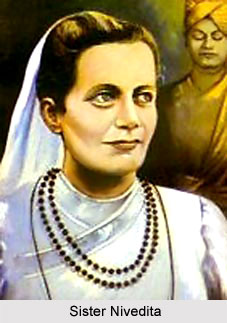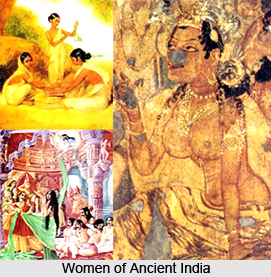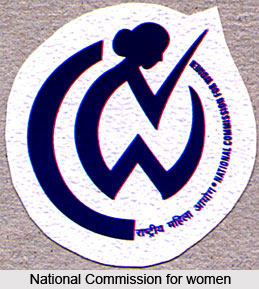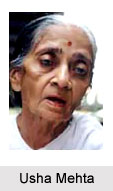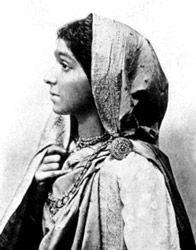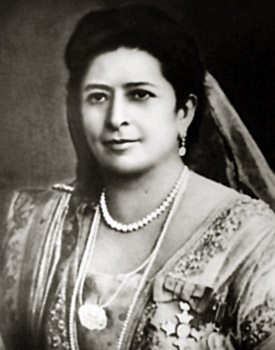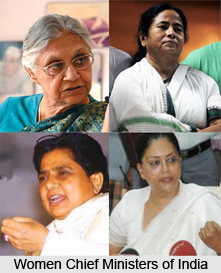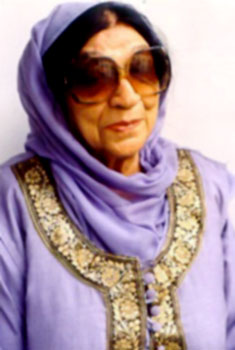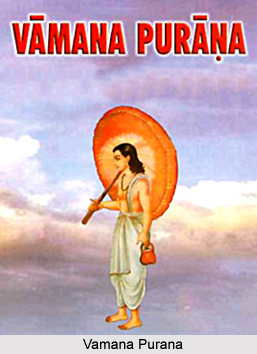 Women in ancient India was secondary as men were misogynist in outlook is the general worldview. Matriarchy did exist in the early days of human civilization in many societies. Today if one has to survive the chaos and tragedy that we are facing then the only solution is establishment of a matriarchal society which is based on creative and generative action. The Indus valley civilization clearly bears the traces of the emergence of the Shakta ritual of Hinduism which worshiped the goddess as the omniscient creator, preserver and destroyer of the cosmos the masculine principle were considered to be subordinate to the feminine. Moreover the role of women in religion as scholars and preachers was at the highest pedestal in these very early days of human civilization.
However according to certain historians, Ancient India failed to establish women power and the later were deprived of equal opportunity with men not only in worldly matters such as inheritance and succession, but also in societal status as well as spiritual practices. Further, in ancient Indian societies, women were believed to be given a low position even within the family. Thus, the status of women in ancient India can be properly examined with reference to authoritative works in Sanskrit literature and those in the Indo-Aryan languages.
Women in ancient India was secondary as men were misogynist in outlook is the general worldview. Matriarchy did exist in the early days of human civilization in many societies. Today if one has to survive the chaos and tragedy that we are facing then the only solution is establishment of a matriarchal society which is based on creative and generative action. The Indus valley civilization clearly bears the traces of the emergence of the Shakta ritual of Hinduism which worshiped the goddess as the omniscient creator, preserver and destroyer of the cosmos the masculine principle were considered to be subordinate to the feminine. Moreover the role of women in religion as scholars and preachers was at the highest pedestal in these very early days of human civilization.
However according to certain historians, Ancient India failed to establish women power and the later were deprived of equal opportunity with men not only in worldly matters such as inheritance and succession, but also in societal status as well as spiritual practices. Further, in ancient Indian societies, women were believed to be given a low position even within the family. Thus, the status of women in ancient India can be properly examined with reference to authoritative works in Sanskrit literature and those in the Indo-Aryan languages.
Hinduism promises women folk having a rich past. Some historians preach that ancient India witnessed of women being treated equal to men and in fact they were measured superior to men in many aspects. It is indeed incredible to note that the word for strength, virility and power in Hindu culture is represented by the feminine "Shakti". Shakti is the all customary universal materialization of the feminine and she is worshiped as the goddess of potency, valour and clout in Hinduism. All male authority is said to be a derived plagiarism from this universal power and strength of the feminine principle. As per Hindu Mythology and literature kings and towns were utterly smashed because a single woman was wronged by the state or the people in power. Examples are Ravana in the epic called Ramayana and the Kauravas in Mahabharata.
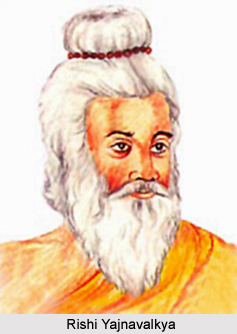 But during the course of history this perfect harmony that existed in the early period of human civilization was overturned for a masculine force dominated society which was based on ruthless action for self-interest and power. In this setup the status of women was drastically reduced to a commodity where women were only considered as a tool for either enjoyment or reproduction and procreation. This thinking was overtly practiced in all modern societies till recently. Though overtly today this thinking is not supported but in the deepest of the subconscious mind this thinking is still alive in the society and its manifestations can be seen in covert ways.
But during the course of history this perfect harmony that existed in the early period of human civilization was overturned for a masculine force dominated society which was based on ruthless action for self-interest and power. In this setup the status of women was drastically reduced to a commodity where women were only considered as a tool for either enjoyment or reproduction and procreation. This thinking was overtly practiced in all modern societies till recently. Though overtly today this thinking is not supported but in the deepest of the subconscious mind this thinking is still alive in the society and its manifestations can be seen in covert ways.
Position of Women in Vedic Age
It is popularly known through the Rig Veda that some ladies themselves were Brahmavddinis (they remained lifelong students). Women in those times were considered as prophets with whom numerous hymns are linked. Prominent among them are Ghosa, Apala, Visvavara. Thus, it can be seen that they are on the same footing with their male seers. Certain Vedic mantras make the glorious position, accorded to a woman in the house-hold very clear. The Rig Veda considered the wife as a haven of rest. Considerable liberty was enjoyed by women in the Vedic Period. The wife had the complete control over the servants, unmarried brothers and sisters of the husband and actually over the whole establishment. Further, in Vedic texts there are references to women publicly attending feasts, dances, and other festive gatherings.
Even in the age of the Upanishads, the women enjoyed a high position; it is borne out by the story of Yajnavalkya and Maitreyi in the Brhadaranyaka Upanishad. She is allowed to participate in the intellectual activities of the society. In the same Upanishad, there is the mention of Gargi asking difficult questions. Thus, it makes clear that even the highest modes of education were open to women in the ancient age. In Chandogya Upanishad, it is mentioned that that women were looked upon with great regard. That they were initiated to Vedic studies like men is proved by Gobhila Griha Sutra that uses the word yajnopavltini (a woman wearing the sacred thread). Yama too, states that women are allowed to the upanayana ceremony. From certain ancient works, for example Gobhila Grhya Sutra and Kathaka Grhya Sutra it has been learnt that women were allowed to recite Vedic mantras.
Position of Women in the Epic Age
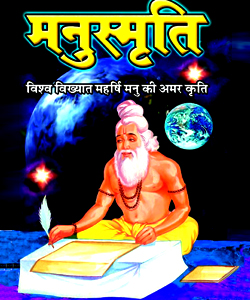 From the two great epics, it has been found that even in the epic age women enjoyed a respectable position. Like for instance, the Mahabharata asks a man to treat his wife with great kindness even if he is extremely angry. A man is not supposed to use cruel words to her, as because a person himself is born as his son; so it is expected from him that he should treat his wife with the same regard as he shows towards his mother. Further, in another context of this great epic, it is stated that one`s wife is one`s friend at the time of death; which means that though a person may have many friends but his wife is the real friend in his difficult times. In another passage, women are said to be honourable. It was believed that by dishonouring or neglecting a woman one honours or disregards Goddess Laxmi.
From the two great epics, it has been found that even in the epic age women enjoyed a respectable position. Like for instance, the Mahabharata asks a man to treat his wife with great kindness even if he is extremely angry. A man is not supposed to use cruel words to her, as because a person himself is born as his son; so it is expected from him that he should treat his wife with the same regard as he shows towards his mother. Further, in another context of this great epic, it is stated that one`s wife is one`s friend at the time of death; which means that though a person may have many friends but his wife is the real friend in his difficult times. In another passage, women are said to be honourable. It was believed that by dishonouring or neglecting a woman one honours or disregards Goddess Laxmi.
Before coming to Smriti Shastra, it may be mentioned that the word `patni` implies equal participation of men and women in sacrifices. In the Manu Smriti, it has been mentioned that women are given a very respectable position in the household. In the same context, Manu states that, where they are not honoured, all rites become futile. It is also stated that a family, in which ladies suffer soon perishes. Similar sentiments are expressed in several other verses of the Manu-Smriti. This epic also emphasises that the wife is the better half of her husband; she is his greatest friend and is the source of his dharma, artha and kama. In legal matters too, women have assured privileges. Interestingly, in some respects, women appear to have enjoyed great privilege, sometimes higher than that of men. Even as a result of committing some big offences, women might be abandoned but they did not lose the right to maintenance.
According to the Vashistha Smriti, the son of a degraded person becomes degraded; but the daughter of such a person is not subjected to apostasy. According to some authorities, women had to undergo only half the prayaschitta prescribed for men committing the same offence. Further, it has also been found that in ancient societies women of all castes, excepting those born in the reverse order of castes, were exempted from all taxes. According to certain authorities, newly married girls and unmarried girls and pregnant women were to be fed before others in the household. Apastamba Dharma Shastra ordains that the rules, not stated in it, are to be ascertained from women. Apastamba Grhya Sutra provides that usages, connected with marriage, are to be learnt from women.
There are many instances that prove that women in ancient India were subjected to humiliation and prejudiced treatment in comparison with men. Like for instance, in some Smriti works, women have been associated with Sudras, even Canddlas. From some literary texts it appears that women had no sovereignty; they were completely under the control of men. The dependence went to such an extent that, even in religious matters, they had no liberty.
 As stated above, there is clear evidence of women wearing sacred threads. But, a commentator who flourished centuries later interpreted the word Yajnopavitini as a woman whose upper garment was placed like a sacred thread. Manu Smriti ordains that a woman is protected by her father in maidenhood, by the husband in her youth, and by her son in her old age; a woman does not deserve independence. Similar sentiments have also been mentioned in Mahabharata. Some scholars interpret this sentiment as the weaker sex, women in all stages of their lives, are entitled to the protection of the stronger sex. However controversial its import may be, there are passages clearly relegating women to a low position. For example, while allowing to women all the Vedic sacraments ordained for men, Manu provides that for women the rites are to be performed without Vedic mantras.
As stated above, there is clear evidence of women wearing sacred threads. But, a commentator who flourished centuries later interpreted the word Yajnopavitini as a woman whose upper garment was placed like a sacred thread. Manu Smriti ordains that a woman is protected by her father in maidenhood, by the husband in her youth, and by her son in her old age; a woman does not deserve independence. Similar sentiments have also been mentioned in Mahabharata. Some scholars interpret this sentiment as the weaker sex, women in all stages of their lives, are entitled to the protection of the stronger sex. However controversial its import may be, there are passages clearly relegating women to a low position. For example, while allowing to women all the Vedic sacraments ordained for men, Manu provides that for women the rites are to be performed without Vedic mantras.
Position of Women in Puranic Age
Position of women in the age of Puranas was very respectable. It is in the Puranic age that women enjoyed considerable liberty in the performance of religious rites. The Smrti debarred them from reciting Vedic mantras, and performing various rites which were the exclusive preserve of men only. It has been stated in literary works that among all castes, the wife should be protected even at the cost of prosperity. If a girl be not married within a reasonable time by her guardian, she is allowed to choose her husband. The custodian of a girl is frequently asked not to give a girl in marriage with an undesirable person. Though the marriage of a girl was compulsory before puberty, yet if an appropriate match was not available, she was allowed to remain at her father`s house even till death.
From Apastamba, it becomes clear that the husband and wife were regarded as an indivisible unit in both religious and worldly matters. It seems that a man was not allowed to abandon his wife at a slight provocation or at his sweet will. Excepting adultery on the part of a woman, the complete dismissal of the marriage-tie was not allowed. If the wife was found guilty of some other offences, the separation of the bed and board was allowed; even then the wife did not lose her right to maintenance. In the event of the death of the husband she is allowed to marry another person. The same authorities allow a widow to be remarried if the marriage was not consummated.
Some of the Dharmashastras appear to be extremely modern in outlook. A sonless widow is allowed to raise a son by her brother-in-law but she has to seek the permission of her superiors. The begetting of only one issue by this means appears to have been allowed. The person of a woman was regarded as so sacred that even a member of any of the three higher castes, committing adultery with a woman of the lowest caste, namely Sudras, was to be expatriated. Adultery with the wife of one`s preceptor was one of the gravest sins for the expiation of which severe penalty was prescribed. The Indian Puranas, however, designed a network of vratas, some of which were meant only for women. A remarkable feature of the Puranic belief is that most of these vratas held out rewards. Some of the blessings of worldly life, ensured by vratas, were: increasing the fortune of the husband, averting widowhood, long life of children, etc. Thus, Puranic vratas served not only to satisfy the women`s craving for religious observances, but also to fulfil their aspirations as wife, mother, etc. According to the Vamana Purana, the sight of Brahmana maidens, among other things, is very auspicious for one leaving home.
Another section of Sanskrit literature that accorded a very high position to women is the Tantra. According to it, the woman is an indispensable means for Tantric sadhana; she is Sakti or energy. Even a woman of low class, who has reached a certain level in sadhana, deserves to be saluted by a member of the highest caste. The Pardnanda lavishly glorifies women. Women were regarded god`s incarnate, and the very life-breath and ornament of the world; they should not be blamed or angered. The Kuldmava declares that every woman is born in the kula of the Great Mother. So, one should not beat a woman even with a flower even if she is guilty of a hundred misdeeds. One should not mind her faults, and should speak only of her good traits.
With the passage of time, the spheres of activity of males and females became more and more watertight. The challenges of life were faced by men, while women were restricted to the household sphere. In the domestic life again, women were more concerned with the rearing of children and looking after the needs of male members. This separation of spheres of activities presumably left the males and females in watertight compartments. With these changes gradually the males predominated over females whose activities were bounded to narrow limits. The males began to exercise more and more power over the females, the former denied some of the basic rights to the latter. Difficulty arises in the case of the Manu Smriti. It is curious that, while it ordains the honouring of women for pleasing gods, it denies them the right of reciting Vedic mantras, claim to separate Sraddha excepting on certain occasions, and the power of acting independently.
According to modern scholars, this is not a unified work. It is believed to be a composite text which, in the opinion of Kane, perhaps, took the present shape through a long period within the wide limits of 200 B.C. and 200 A.D. It may be that the passages, dealing with the disabilities of women, were added later when there was a general decline in the position of women. From the foregoing account of the attitude of the different authorities, it seems that men were prompted by a desire of domination over the womenfolk. This approach perhaps arose from the fact that men had little or no poise in the ability of women to protect their honour, rights and interests. Men looked upon women as the weaker sex; as such they hedged them in barriers of restrictions and constraints. In the wake of the Muslim invasion of India, men perhaps constricted control over women in their concern to protect them from persecution at the hands of aliens. The Uttarardmacharita states that men are generally prone to spread scandal about the character of women.
Besides the Sanskrit literature, the Indo-Aryan literature too sheds light on the position of women. The position of women, according to Jatakas, is quite unusual. They are stated to be difficult to protect as they are considered as obstacles in the way to salvation. It should be stated that Buddhism did not reject privileges of the practices, preached by it, to women. The master was at first reluctant to admit women into the order. But, afterwards he waived the restriction about them. A regular order of nuns was established. The nuns were not, however, treated on the basis of equality with monks. Nuns were subjected to other rules also which relegated them to a position lower than that of the monks. Further, from certain references it has been learnt that Lord Buddha himself did not attach any prohibition to low-class women.
This global platform is in dire need of collective action for unification rather than reductionism. History bears testimony to the fact that any society or campaign, which was ever based on reductionism and negative change, failed miserably. The great Roman Civilization of the past vanished because it considered itself superior at the behest of the rest of the humanity. The treatment of salves in ancient Rome is something which one cannot imagine in the contemporary age. Hitler`s Germany based on a superior race could not survive either. Any religious, social or political movement which divides a society and imprisons the mind, the heart, the soul and the body of its people is bound to fail miserably either today or definitely in the near future.
